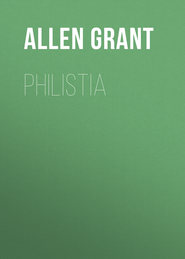По всем вопросам обращайтесь на: info@litportal.ru
(©) 2003-2024.
✖
Paris. Grant Allen's Historical Guides
Настройки чтения
Размер шрифта
Высота строк
Поля
Again, the portion of the building that directly faces you as you enter the court from St. Germain is the oldest part, and represents the early Renaissance spirit. It is the most primitive Louvre. Note in particular the central elevated portion, known as a Pavillon, and graced with elegant Caryatides. These Pavillons are lingering reminiscences of the mediæval towers. You will find them in the corners and centres of other blocks in the Louvre. They form a peculiarly French Renaissance characteristic. The Palace is here growing out of the Castle. The other three sides of the square are, on the whole, more classical and later.
Now cross the square directly to the Pavillon de l’Horloge, as it is called, from the clock which adorns it. To your L, on the floor of the court, are two circular white lines, enclosed in a square. These mark the site of the original Château of the Louvre, with its Keep, or donjon. François Ier, who began the existing building, originally intended that his palace should cover the same area. It was he who erected the L wing, which now faces you, marked by the crowned H on its central round gable, placed there by his successor, Henri II, under whom it was completed. To the same king are also due the monograms of H and D (for Diane de Poitiers, his mistress), between the columns of the ground floor. The whole of the Pavillon de l’Horloge, and of this west wing, should be carefully examined in detail as the finest remaining specimen of highly decorated French Renaissance architecture. (But the upper story of the Pavillon, with the Caryatides, is an age later.) Observe even the decoration lavished on the beautiful chimneys. Pierre Lescot was the architect of this earliest wing; the exquisite sculpture is by Jean Goujon, a Frenchman, and the Italian, Paolo Ponzio. Examine much of it. The crossed K’s of certain panels stand for Catherine de Médicis.
The R wing, beyond the Pavillon, was added, in the same style, under Louis XIII, who decided to double the plan of his predecessors, and form the existing Cour du Louvre.
The other three sides, in a more classic style, with pediments replacing the Pavillons, and square porticoes instead of rounded gables, are for the most part later. The S side, however, as far as the central door, is also by Pierre Lescot. It forms one of the two fronts of the original square first contemplated. The attic story of these three sides was added under Louis XIV, to whom in the main is due this Cour du Louvre. A considerable part of Louis XIV’s decorations bear reference to his representation as le roi soleil.
Now, pass through the Pavillon de l’Horloge (called on its W side Pavillon Sully) into the second of the three courts of the Louvre. To understand this portion of the building, again, you must remember that shortly after the erection of the Old Louvre, Catherine de Médicis began to build her palace of the Tuileries, now destroyed, to the W of it. She (and subsequent rulers) designed to unite the Old Louvre with the Tuileries by a gallery which should run along the bank of the river. Of that gallery, Catherine de Médicis herself erected a considerable portion, to be described later, and Henri IV almost completed it. Later on, Napoleon I conceived the idea of extending a similar gallery along his new Rue de Rivoli, on the N side, so as to enclose the whole space between the Louvre and the Tuileries in one gigantic double courtyard. Napoleon III carried out his idea. The second court in which you now stand is entirely flanked by buildings of this epoch – the Second Empire. Examine it cursorily as far as the modern statue of Gambetta.
Stand or take a seat by the railing of the garden opposite the Pavillon Sully. The part that now faces you forms a portion of the building of François Ier and Louis XIII, re-decorated in part by Napoleon I. The portions to your R and L (consult Baedeker’s map) are entirely of the age of Napoleon III, built so as to conceal the want of parallelism of the outer portions. Observe their characteristic Pavillons, each bearing its own name inscribed upon it. This recent square, though quite modern in the character of its sculpture and decoration, is Renaissance in its general architecture, and, when looked back upon from the gardens of the Tuileries, affords a most excellent idea of that stately style, as developed in France under François Ier. The whole of this splendid plan, however, has been rendered futile by the destruction of the Tuileries, without which the enclosure becomes wholly meaningless.











